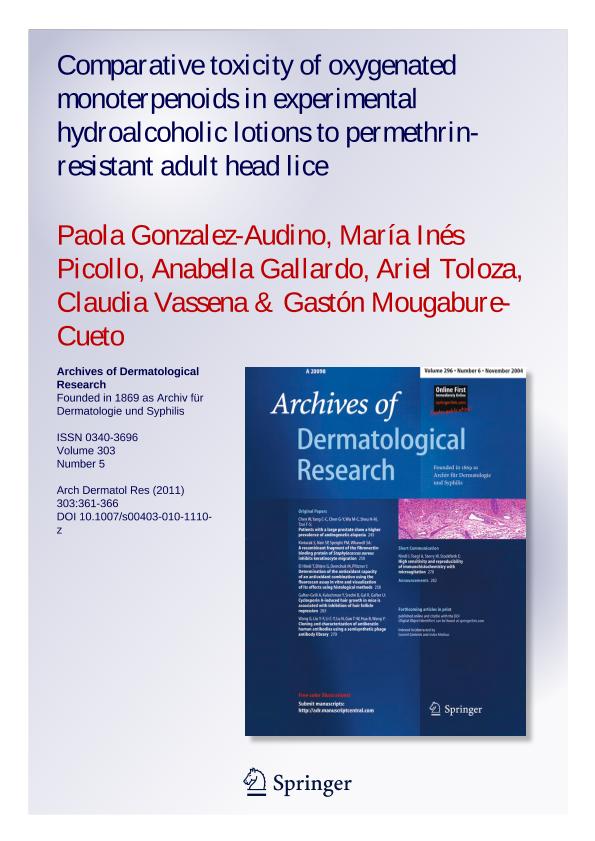Artículo
Arrestant Effect of Human Scalp Compounds on Pediculus humanus capitis. Journal Medical Entomology
Ortega Insurralde, Isabel; Toloza, Ariel Ceferino ; Gonzalez Audino, Paola Andrea
; Gonzalez Audino, Paola Andrea ; Picollo, Maria Ines
; Picollo, Maria Ines
 ; Gonzalez Audino, Paola Andrea
; Gonzalez Audino, Paola Andrea ; Picollo, Maria Ines
; Picollo, Maria Ines
Fecha de publicación:
12/2016
Editorial:
Entomological Society of America
Revista:
Journal of Medical Entomology
ISSN:
0022-2585
Idioma:
Inglés
Tipo de recurso:
Artículo publicado
Clasificación temática:
Resumen
Relevant evidence has shown that parasites process host-related information using chemical, visual, tactile, or auditory cues. However, the cues that are involved in the host–parasite interaction between Pediculus humanus capitis (De Geer 1767) and humans have not been identified yet. In this work, we studied the effect of human scalp components on the behavior of adult head lice. Filter paper segments were rubbed on volunteers’ scalps and then placed in the experimental arena, where adult head lice were individually tested. The movement of the insects was recorded for each arena using the software EthoVision. Average movement parameters were calculated for the treatments in the bioassays such as total distance, velocity, number of times a head louse crossed between zones of the arena, and time in each zone of the arena. We found that scalp components induced head lice to decrease average locomotor activity and to remain arrested on the treated paper. The effect of the ageing of human scalp samples in the response of head lice was not statistically significant (i.e., human scalp samples of 4, 18, 40, and 60 h of ageing did not elicit a significant change in head louse behavior). When we analyzed the effect of the sex in the response of head lice to human scalp samples, males demonstrated significant differences. Our results showed for the first time the effect of host components conditioning head lice behavior. We discuss the role of these components in the dynamic of head lice infestation.
Palabras clave:
Arrestant
,
Human Scalp
,
Headlice
Archivos asociados
Licencia
Identificadores
Colecciones
Articulos(UNIDEF)
Articulos de UNIDAD DE INVESTIGACION Y DESARROLLO ESTRATEGICOS PARA LA DEFENSA
Articulos de UNIDAD DE INVESTIGACION Y DESARROLLO ESTRATEGICOS PARA LA DEFENSA
Citación
Ortega Insurralde, Isabel; Toloza, Ariel Ceferino; Gonzalez Audino, Paola Andrea; Picollo, Maria Ines; Arrestant Effect of Human Scalp Compounds on Pediculus humanus capitis. Journal Medical Entomology; Entomological Society of America; Journal of Medical Entomology; 12-2016
Compartir
Altmétricas



